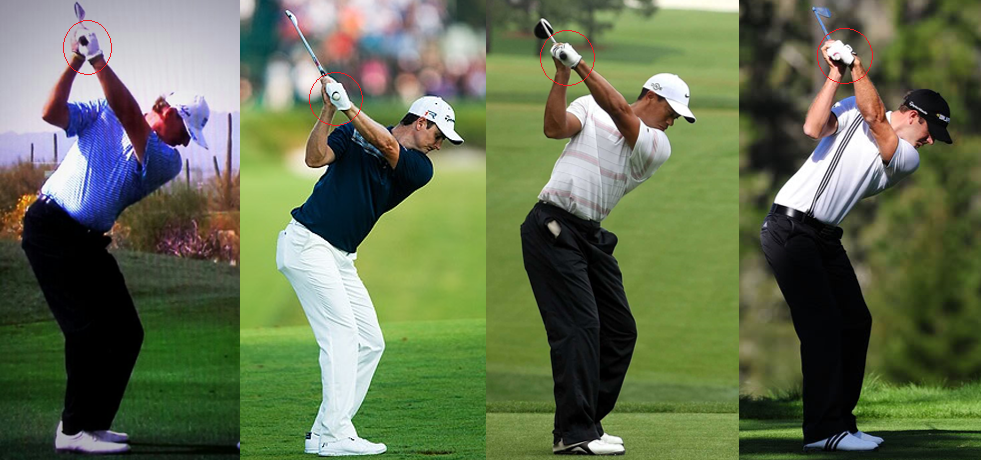Golf is a sport that requires precision, technique, and finesse. One of the key components of a successful golf swing is the wrist hinge, which involves cocking the wrists at the top of the backswing and then releasing them through impact. However, some golfers opt for a no-wrist hinge golf swing, where the wrists remain relatively stable throughout the swing. In this article, we will explore the benefits of a no-wrist hinge golf swing, how to perform it correctly, common mistakes to avoid, and tips for perfecting it.

Benefits of No Wrist Hinge Golf Swing
Consistency
One of the main benefits of a no wrist hinge golf swing is consistency. Without the wrist hinge, there is less room for error and the swing becomes more repeatable. This can lead to more consistent ball striking and better overall scores.
Read Also: Wrist Hinge In Golf: When Should You Start Setting The Club?
Power
Contrary to popular belief, a no wrist hinge golf swing can generate plenty of power. When executed correctly, the power comes from the proper rotation of the body and the transfer of weight, rather than relying on the wrists to add extra speed to the clubhead.
Control
Another advantage of a no wrist hinge golf swing is control. With less wrist movement, there is less chance of mishitting the ball and less chance of the clubface being open or closed at impact. This leads to more accurate shots and better shot selection.
How to Perform a No Wrist Hinge Golf Swing
Proper Grip
To perform a no wrist hinge golf swing, it’s important to have a proper grip on the club. The grip should be neutral, with the clubface pointing towards the target. The hands should be placed on the club in a way that feels comfortable and natural.
Proper Stance
The stance is also crucial for a no wrist hinge golf swing. The feet should be shoulder-width apart, with the knees slightly bent. The weight should be evenly distributed between both feet, with a slight tilt towards the target. The shoulders should be square to the target.
Proper Backswing
The backswing for a no wrist hinge golf swing should be smooth and controlled. The arms should be kept relatively straight and close to the body, with minimal wrist movement. The club should be taken back until it’s parallel to the ground, with the shoulders and hips fully rotated.
Proper Downswing
As the downswing begins, the body should initiate the movement, with the hips and shoulders leading the way. The arms should remain relaxed and passive, with the club dropping down to the correct position. The weight should shift to the front foot, with the left knee (for right-handed golfers) starting to straighten. At impact, the hands should be slightly ahead of the ball, with the body fully rotated towards the target.
Common Mistakes to Avoid
Early Wrist Release
One of the most common mistakes in a no wrist hinge golf swing is an early release of the wrists. This can lead to a loss of power and accuracy. To avoid this, focus on keeping the wrists stable throughout the swing and allowing the body to lead the way.
Overly Rigid Arms
Another mistake is having overly rigid arms, which can lead to a lack of power and distance. To avoid this, make sure the arms are relaxed and passive, with minimal tension.
Flat Swing Plane
Finally, a flat swing plane can be a problem in a no wrist hinge golf swing. To avoid this, make sure the club is on the correct plane throughout the swing, with the hands in the correct position at the top of the backswing.
Tips for Perfecting the No Wrist Hinge Golf Swing
Practice, Practice, Practice
As with any golf swing, practice is essential to perfecting the no wrist hinge golf swing. Take the time to work on your technique and get comfortable with the swing.
Video Analysis
Using video analysis can be a useful tool to identify areas of improvement in your no wrist hinge golf swing. Record your swing and review it with a coach or instructor to get feedback and make adjustments.
Swing Drills
Incorporating swing drills into your practice routine can also help to perfect the no wrist hinge golf swing. Try using a towel under your armpits to keep the arms close to the body, or practice swinging with a weighted club to build strength and control.
FAQs
Is a no wrist hinge golf swing suitable for all golfers?
No, a no wrist hinge golf swing may not be suitable for all golfers. It requires a certain level of strength, flexibility, and technique to execute properly.
Can I still generate power without a wrist hinge?
Yes, a no wrist hinge golf swing can generate plenty of power when executed correctly. The power comes from the proper rotation of the body and transfer of weight.
Can I still use a wrist hinge for certain shots?
Yes, golfers may choose to use a wrist hinge for certain shots, such as flop shots or bunker shots.
How long does it take to perfect the no wrist hinge golf swing?
The time it takes to perfect the no wrist hinge golf swing will vary from golfer to golfer, depending on their level of skill and dedication to practice.
What are some good swing drills to practice for the no wrist hinge golf swing?
Some good swing drills to practice for the no wrist hinge golf swing include swinging with a towel or headcover under the armpits, practicing with a shortened club, and working on the proper sequencing of the downswing.
Conclusion
In conclusion, the no wrist hinge golf swing can be a valuable tool for golfers looking to improve their consistency, power, and control. By following the proper technique and avoiding common mistakes, golfers can reap the benefits of this unique swing style. So give it a try, and see if the no wrist hinge golf swing is right for you.